Experienced travelers are supposed to be pros at three things: planes, trains, and automobiles. I’ve mastered the art of finagling extra dinners on airplanes and successfully doctored a bent license plate on a rental car to avoid the damage fees I clearly deserved. The sight of train timetables, however, made my palms sweat. Crowded train cars with the inevitable soundtrack of crying babies evoked fantasies of Murder on the Orient Express, but with me as the murderer. Trains, to me, were a novelty to be watched in Harry Potter or taken to work if you didn’t have a car — not a viable way of exploring a country.
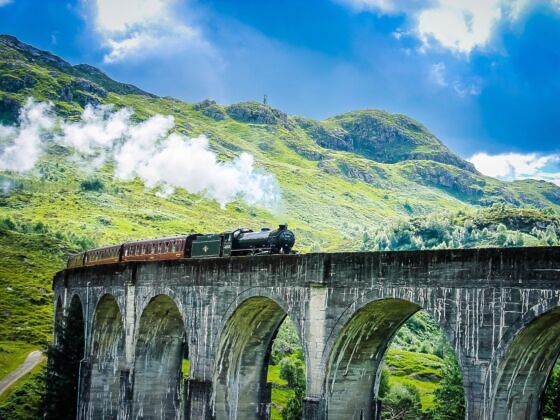

How to Take a Castle and Whisky Tasting Train Through the Scottish Highlands
Sometimes, we hate something simply because we don’t understand it. Trains intimidated me. That’s why, when I got the opportunity to travel the Scottish Highlands by train, I said to a coworker, “It sounds like an incredible trip. You know, except for the trains.”
In 2015 I went to grad school in Scotland and did a Scottish Highlands tour three times — all via rental car driven by a qualified left-side-of-the-road driver. I thought cars represented ultimate freedom. Trains were for an older generation, the stubborn travelers of yesterday. Trains were Charles Dickens. Cars were Jack Kerouac.
Seven years later I skeptically stepped on a train in Scotland for the first time, and spent the next week crisscrossing on a Scottish Highlands tour through landscapes hidden from the highways. Two castles, countless whisky tastings, and 20,000 Highland cows later, I conceded: maybe Dickens isn’t so bad.
Start your Scottish Highlands tour in Edinburgh
Anyone thinking about exploring Scotland — by train or otherwise — should start in Edinburgh. Defined by its cobbled, hilly streets that could easily replace your StairMaster, a 12th-century castle, and labyrinthine alleyways (or “closes”), Edinburgh feels like a mix of London and a small Scottish village. Though I had lived in Edinburgh for a year, I got lost multiple times wandering closes I never knew existed before, and which seemed to open up around the city like portals to miniature Diagon Alleys.
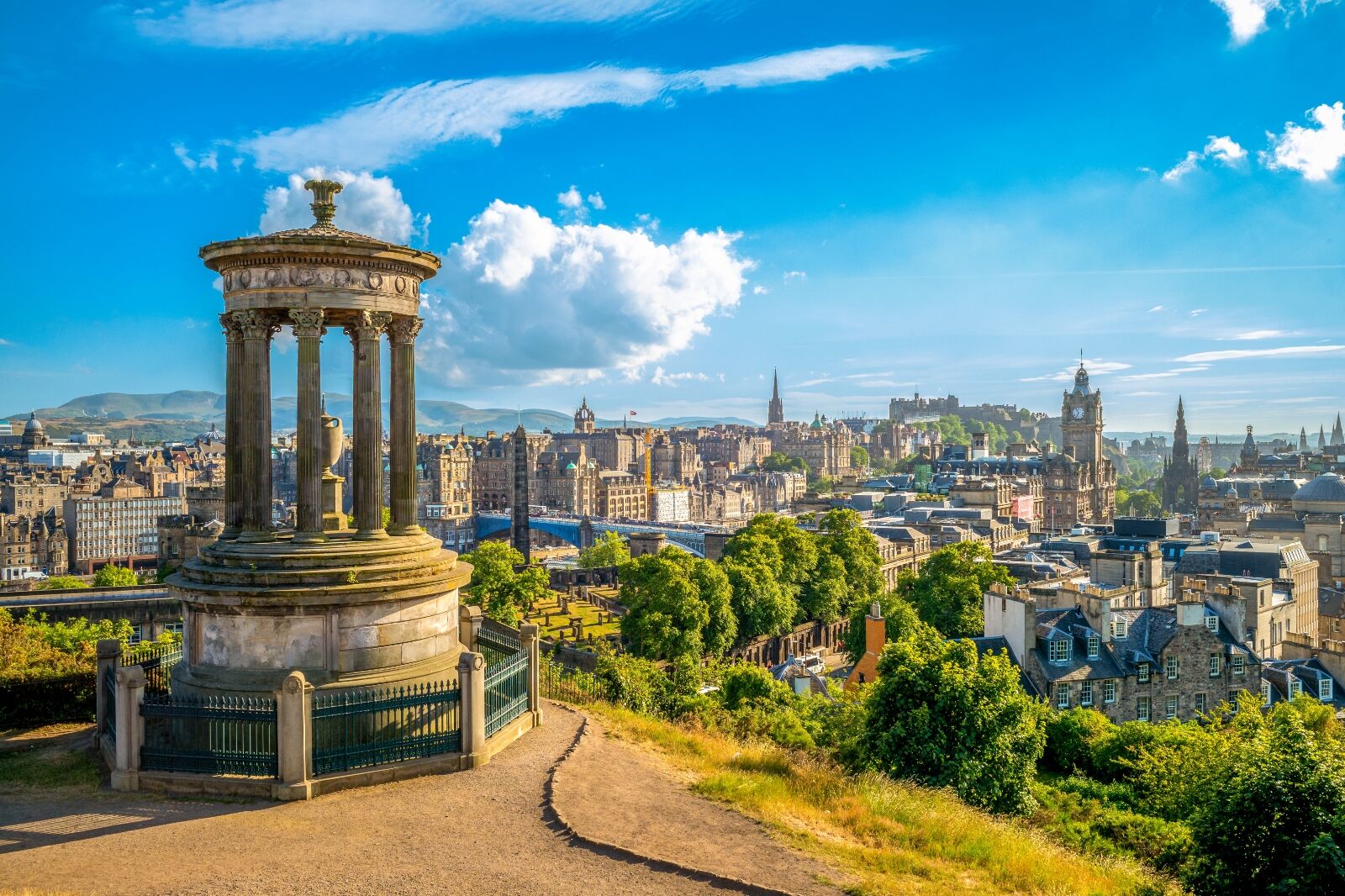
Photo: Richie Chan/Shutterstock
The city is also the best place to experience all the Scottish cliches you dreamed about on your flight over. You can take a photo with a bagpiper, try haggis and blood pudding at a hole-in-the-wall pub, shop at a kilt store, visit the Writer’s Museum dedicated to Sir Walter Scott and Robert Burns, and end the night with a deep-fried Mars Bar (arguably the most Scottish thing on this list). And of course, what visit to Scotland’s capital would be complete without hitting a whisky distillery?
The Johnnie Walker Distillery on Princes Street was a refreshing new sight for me. Opened in 2021, the distillery has several tasting rooms, a gift shop where you can craft your own whisky, a rooftop bar, and one of the most immersive tours I’ve ever taken. I’m a big whisky fan, but distillery tours almost never interest me. Not because I’m a snob. Quite the opposite. Because I don’t want to sniff or swish my drinks, learn about the density of wood in the casks, or pretend to taste complex notes when I don’t. My palate isn’t refined enough for all that. But the Johnnie Walker tour is different.
It didn’t feel like a middle school field trip to a science museum, but a combination of Disneyland and Willy Wonka’s Chocolate Factory. There was a live-action theatrical performance of Johnnie Walker’s history, a “scent room” where the guide shot bubbles from a gun, which burst into an aromatic mist, and a tasting room that looked like a private nightclub, with a buffet of ingredients for guests to experiment with. It sets the bar pretty high, but it’s the perfect way to kick off your Scotland whisky experience.
The Johnnie Walker distillery isn’t the only welcome new addition to the city. Virgin Hotels on Victoria Street opened this past summer, bringing unconventional luxury to Edinburgh’s Old Town. With Virgin’s patented blend of edgy, adult-oriented decor and quirky opulence, the hotel at first feels more like a museum. A glittering, nightclub-esque entryway leads to a lobby filled with bookshelves, artwork, a fireplace, plush couches, and an old record player. In the spacious guest rooms, you’ll find a welcome note scrawled on your mirror in red lipstick, and the best-stocked minibar I’ve ever seen. One of my colleagues was lucky enough to have an attic-like bonus room, equipped with a massive divan that looked like something from Eyes Wide Shut.
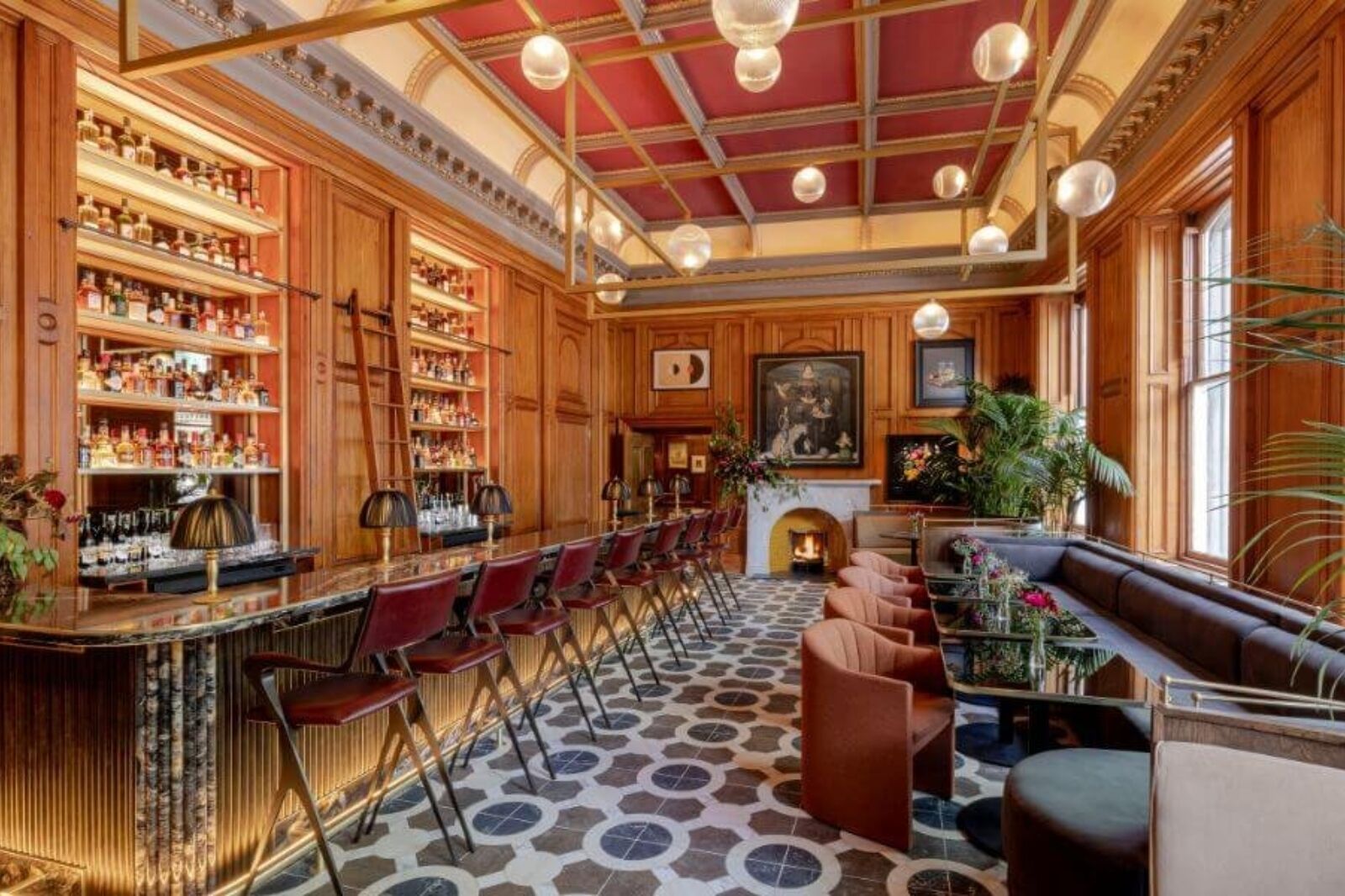
Photo: Virgin Hotels
Virgin Hotels are designed to make you never want to leave the hotel. That’d be fine if this were a remote wellness resort in the mountains. But this is Scotland, and you’ve got places to be.
To Fort William on the West Highland Line
I understand highways. I can look at a GPS and figure out where I’m supposed to go. Train routes, however, are like long division. It’s supposed to be easy, but carry the six when you’re supposed to carry the four, and you wind up in no-man’s-land. Turns out, there’s a reason they teach long division in elementary school: It’s really not that hard.
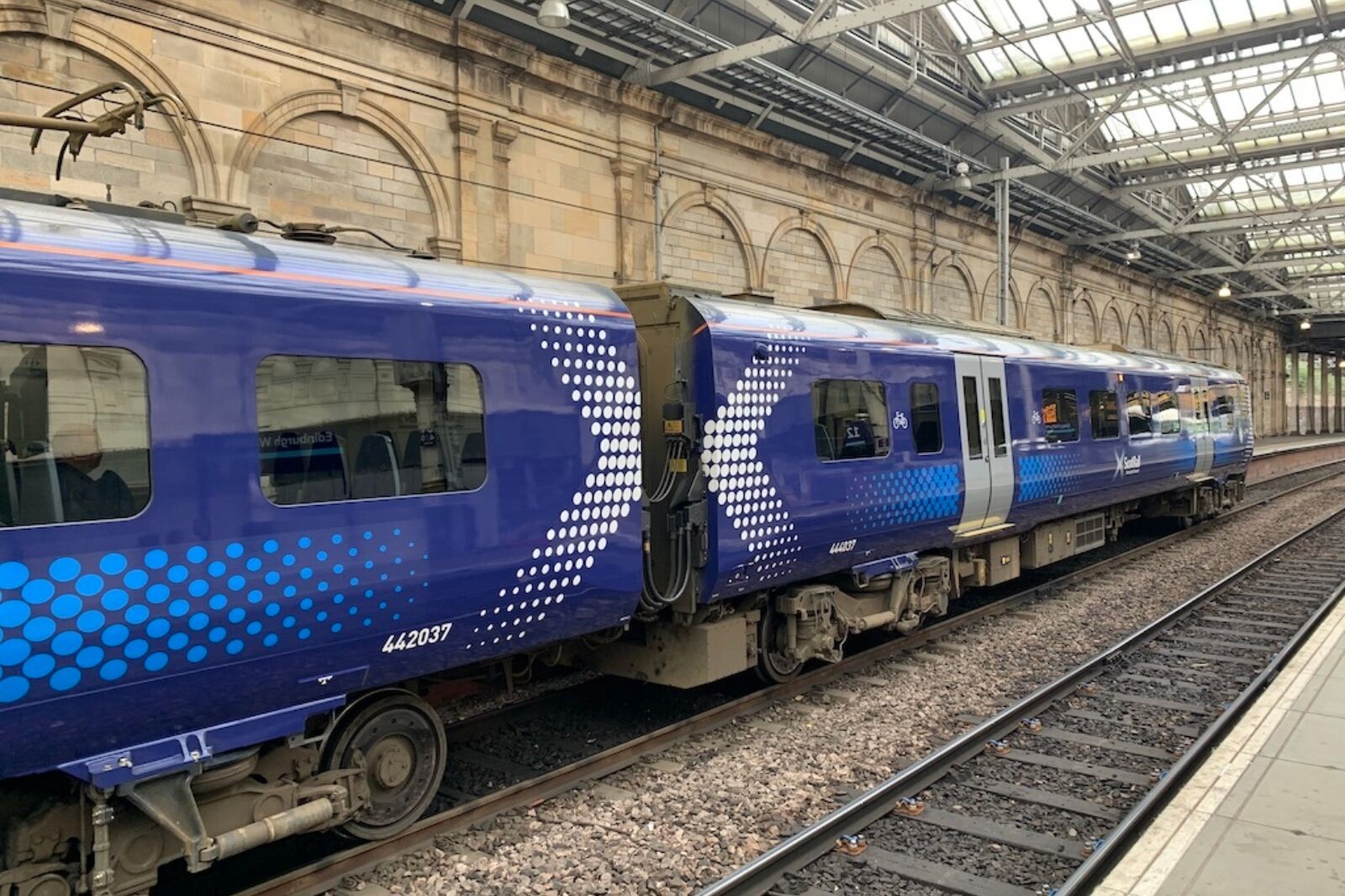
Photo: Eben Diskin
We took a quick train from Edinburgh to Glasgow, then the famously scenic West Highland Line from Glasgow up to Fort William. It didn’t take long before we had cleared the city limits, and the Outlander-esque landscapes started scrolling past the window. Spanning the wild west coast of Scotland, the West Highland Line brings you through the glens and lakes of Loch Lomond and The Trossachs National Park, the boggy Rannoch Moor, and the mountains of Glencoe, on your way to Fort William. We passed some of the tiniest rail stations I’ve ever seen, many of which looked more like tollbooths, seemingly miles from the nearest paved road.

Photo: Joe Dunckley/Shutterstock
At one such station, two men in their mid-20s boarded and sat across from me. They looked like classic backpackers, with dusty oversized backpacks and beards that clearly hadn’t been trimmed in weeks.
“Going to Fort William?” I asked. Fort William was the only town on the line with over 1,000 people. Pretty much every passenger was going there.
“Eventually, maybe,” said one, shrugging at the other. “Not for a couple days though.”
“So you’re just winging it?”
“Basically. Been here about two weeks now, just going around on the train. These little villages are pretty cool.”
“The one you just came from — what’d you do there?”
“Hiked a bit,” the other backpacker said. “Drank a bit. Just bummed around. There’s not much to do, I guess.”
“…but the not-doing is more fun than the doing, sometimes,” his friend chimed in. “Especially in a place like this.”
“And getting around on the train’s been easy? Why not just drive?”
The guy laughed and nudged his friend. “I don’t trust him to drive on the left side. Or myself, either. Besides, now we don’t have to worry about gas, or getting lost, or staying awake. We just get on and off wherever looks good.”
It made perfect sense, I just didn’t expect to meet two Kerouacs on a train.
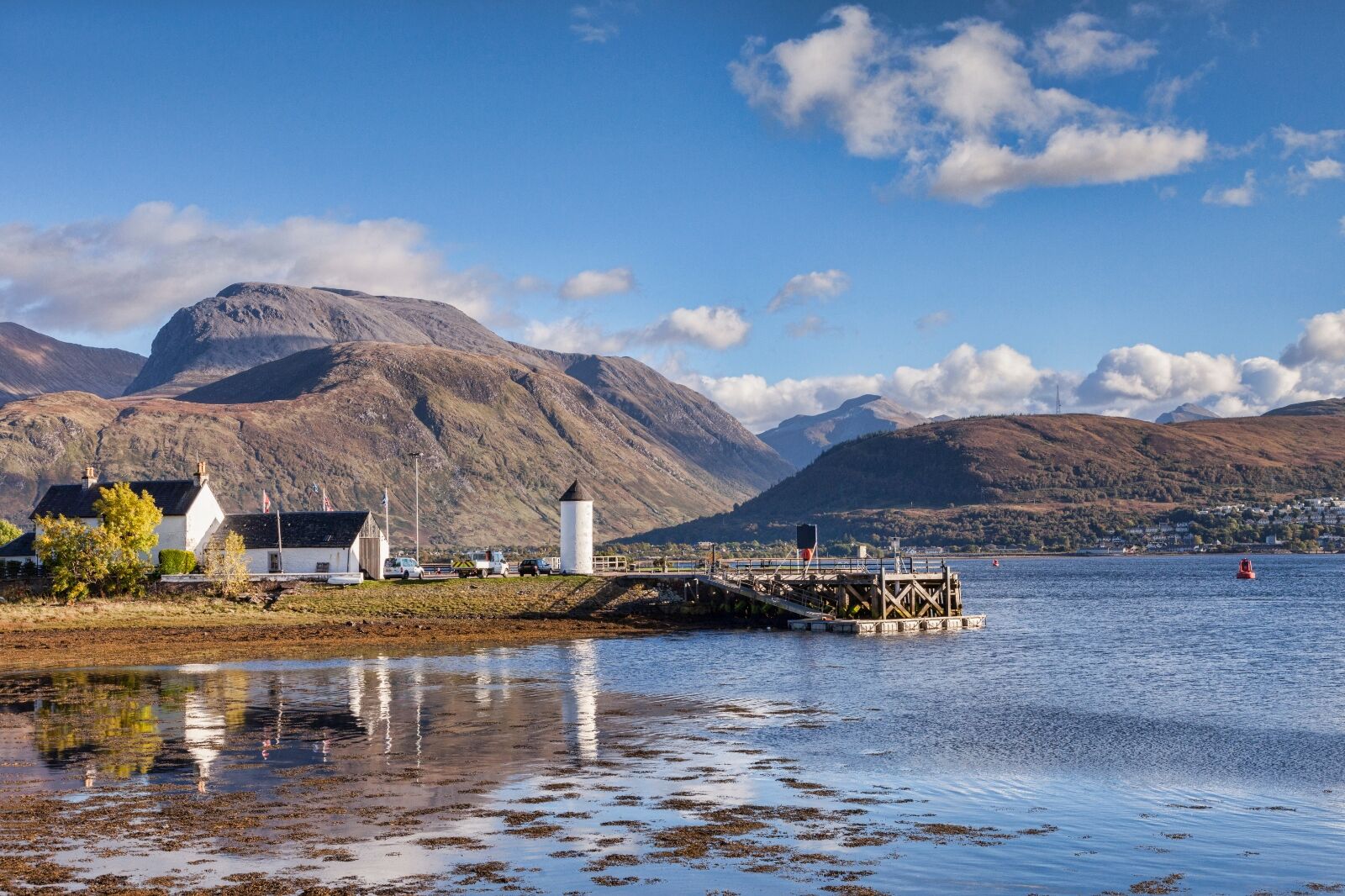
Photo: travellight/Shutterstock
They got off a few stops later, at another station that looked like a tollbooth, while we continued to Fort William. The home base for a Scottish Highlands tour, Fort William is close to the geographically dramatic Glencoe, hill walking and bike paths, and Ben Nevis — the tallest mountain in the UK. It’s also home to the Crannog Seafood Restaurant, where I had the best oysters I’ve ever eaten in my life (coming from a New England guy, that’s saying something). From our hotel, the stately Ballachulish just outside town, it was just a few minutes’ cab to the Ben Nevis Distillery, our first whisky-tasting experience in the Highlands.
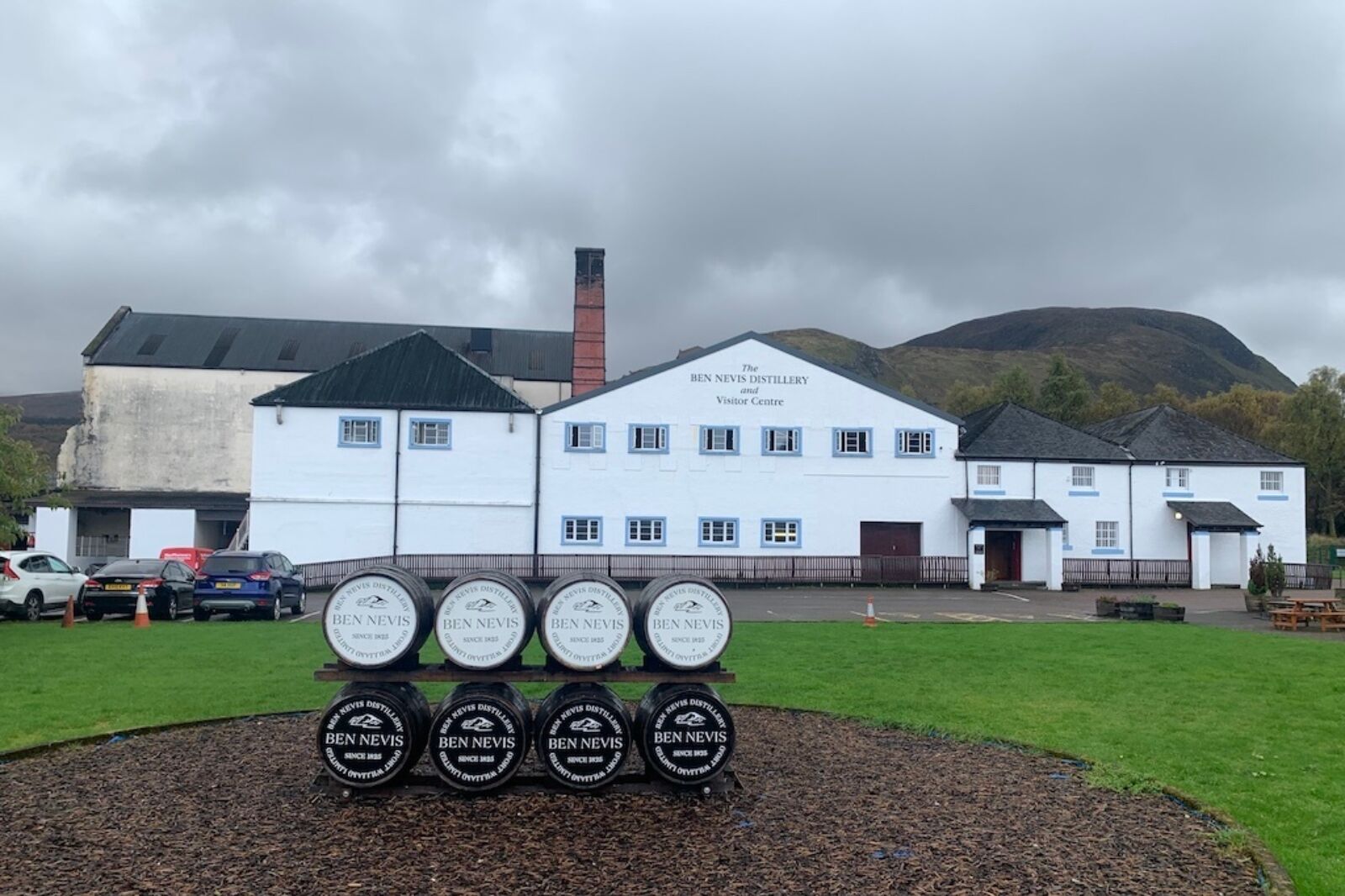
Photo: Eben Diskin
Unlike Johnnie Walker, Ben Nevis wows not with technological flair, but by sheer natural beauty. In the shadow of Ben Nevis mountain, and surrounded by towering peaks and rolling hills, the distillery feels like it grew out of the land itself. Indeed, the tree bark in the surrounding forest has been imbued with whisky due to the evaporation process in the nearby casks.
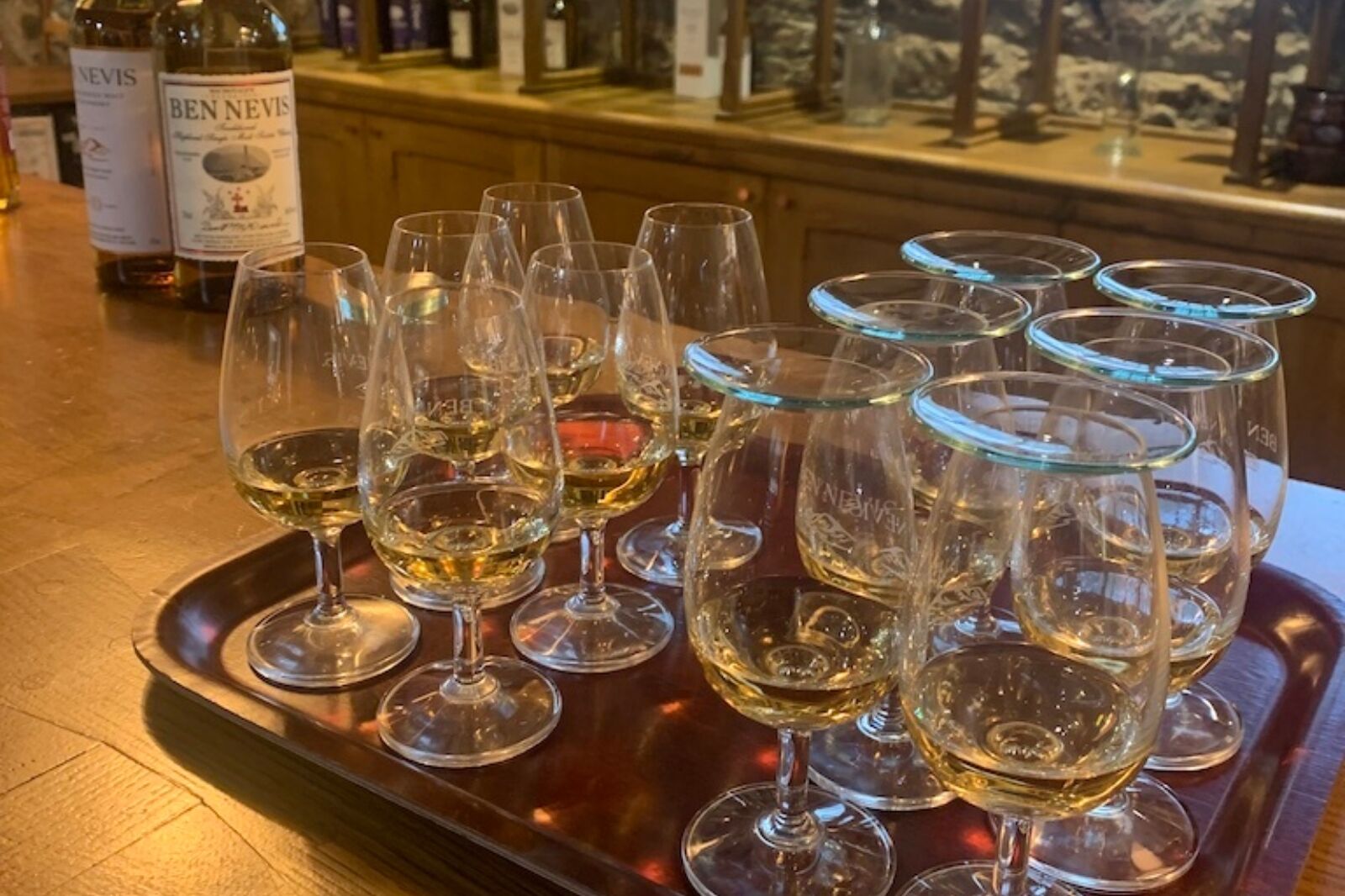
Photo: Eben Diskin
Still buzzing from the distillery, we boarded the West Highland Line yet again to Mallaig, the line’s terminus. While the fishing village itself is picturesque, sitting on the edge of the sea, and there was a sense of achievement in reaching the remote end of the line, this leg of the trip had one real purpose: seeing the “Harry Potter bridge.”
An hour from Fort William, the conductor’s voice came on the speaker system for a special announcement: “We’ll be over the Glenfinnan Viaduct in just a minute now. You might recognize it as the stone bridge from Harry Potter. Best view’ll be on your right.”
Like the seatbelt sign on a plane being switched off upon landing, everyone immediately shot up from their seats. Toddlers, octogenarians, and everyone in between glued their faces to the window for a look at the famous bridge, where the Hogwarts Express scenes of the movies had been filmed. I’d always wondered why a bunch of wizards took a train to school instead of, you know, using magic to conjure a faster mode of transportation. Now I know: the views.
Take the Kyle Line from Inverness
To see another side of the Highlands, take the Kyle Line from Inverness, the capital and largest city of the Highlands. Like Fort William on the western side of the Highlands, Inverness is the perfect east coast base, with proximity to Culloden battlefield (Outlander, anyone?) and the storied Loch Ness, where you can cruise across the lake while learning about the monster that may or may not dwell there. The cruise also brings you right alongside Urquhart Castle, a fortress dating back to the 13th century that overlooks the loch.
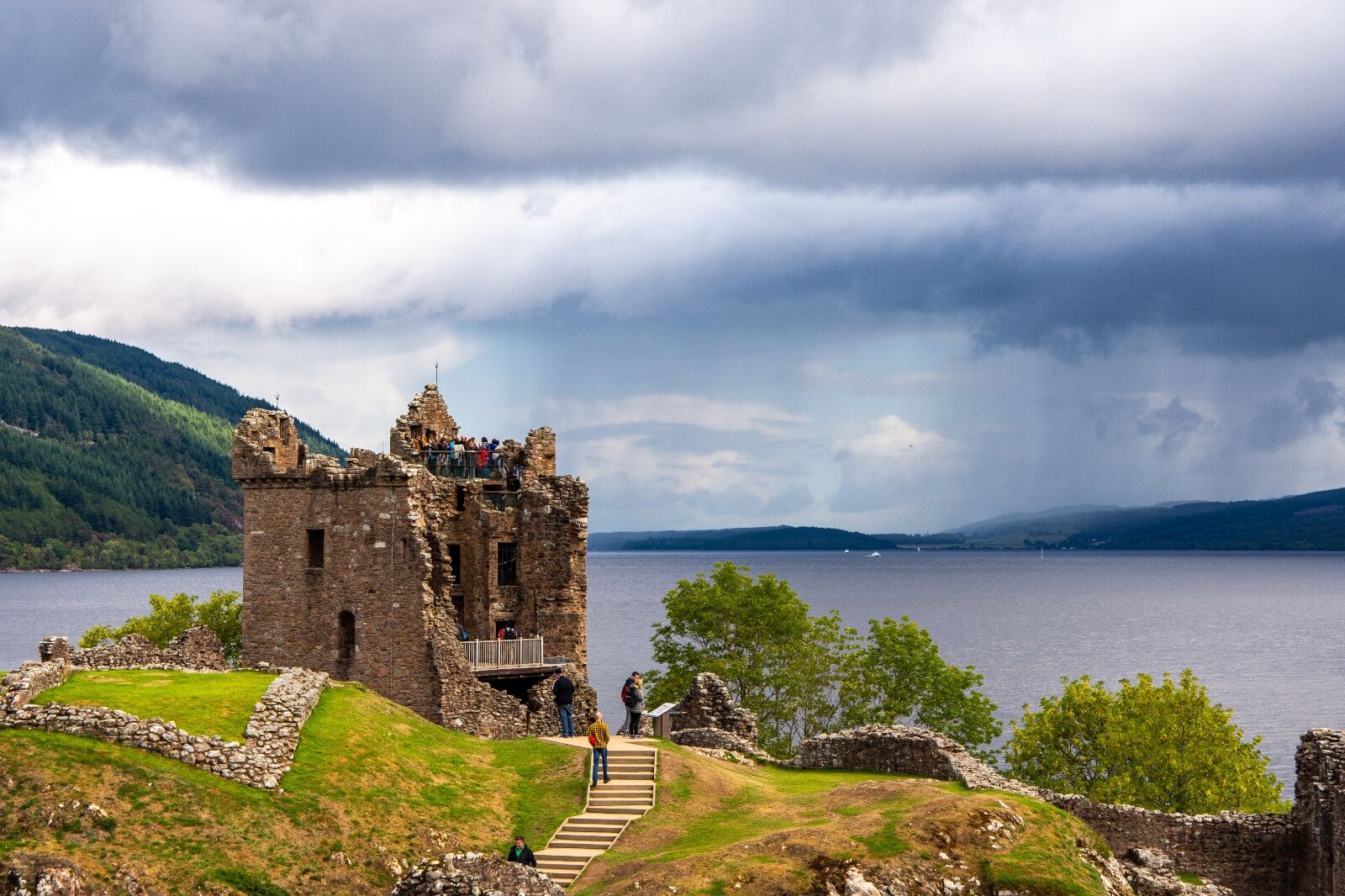
Photo: pql89/Shutterstock
The Kyle Line runs across the Highlands from Inverness to Kyle of Lochalsh, a village on the northwest coast known as the home of Eilean Donan Castle — one of Scotland’s most dramatic medieval landmarks.
“Is this the train to the castle?” asked a woman who had just boarded in Inverness. She was American and dressed stylishly as if she had just come from a shopping spree on Fifth Avenue.
“Yeah,” I answered. She sat in front of me.
“Sorry, I should not have asked. I told myself I’d be more independent since the divorce. That I didn’t need a man’s help for anything. No offense.”
“Uhh, no problem.”
“That’s why I’m on this trip, I guess. To prove I can do it. Not to him…to myself.”
I could tell I was officially in the conversation, whether or not I wanted to be.
“So you’re going around Scotland by train?”
“A little bit of everything. He refused to travel with me, you know. He thought I was high maintenance or something. Well, look at me now, on a train to God-knows-where with hardly any luggage.”
She had two massive suitcases — each two-thirds her size — stowed in the luggage car. I wondered how she carried it all.
“Where are you going after the castle?” I asked, now interested in the woman as a character study.
“I think I’ll spend a few days on the Isle of Skye. It’s not far from the castle.”
“The train doesn’t go to Skye. How’re you getting there?”
“I’ll figure it out,” she shrugged. “I always figure it out. I don’t need anyone’s help.”
She faced forward in her seat, signaling that the conversation was over. When we disembarked, I imagined her in a little rowboat with those two giant suitcases, determinedly paddling her way to the Isle of Skye.
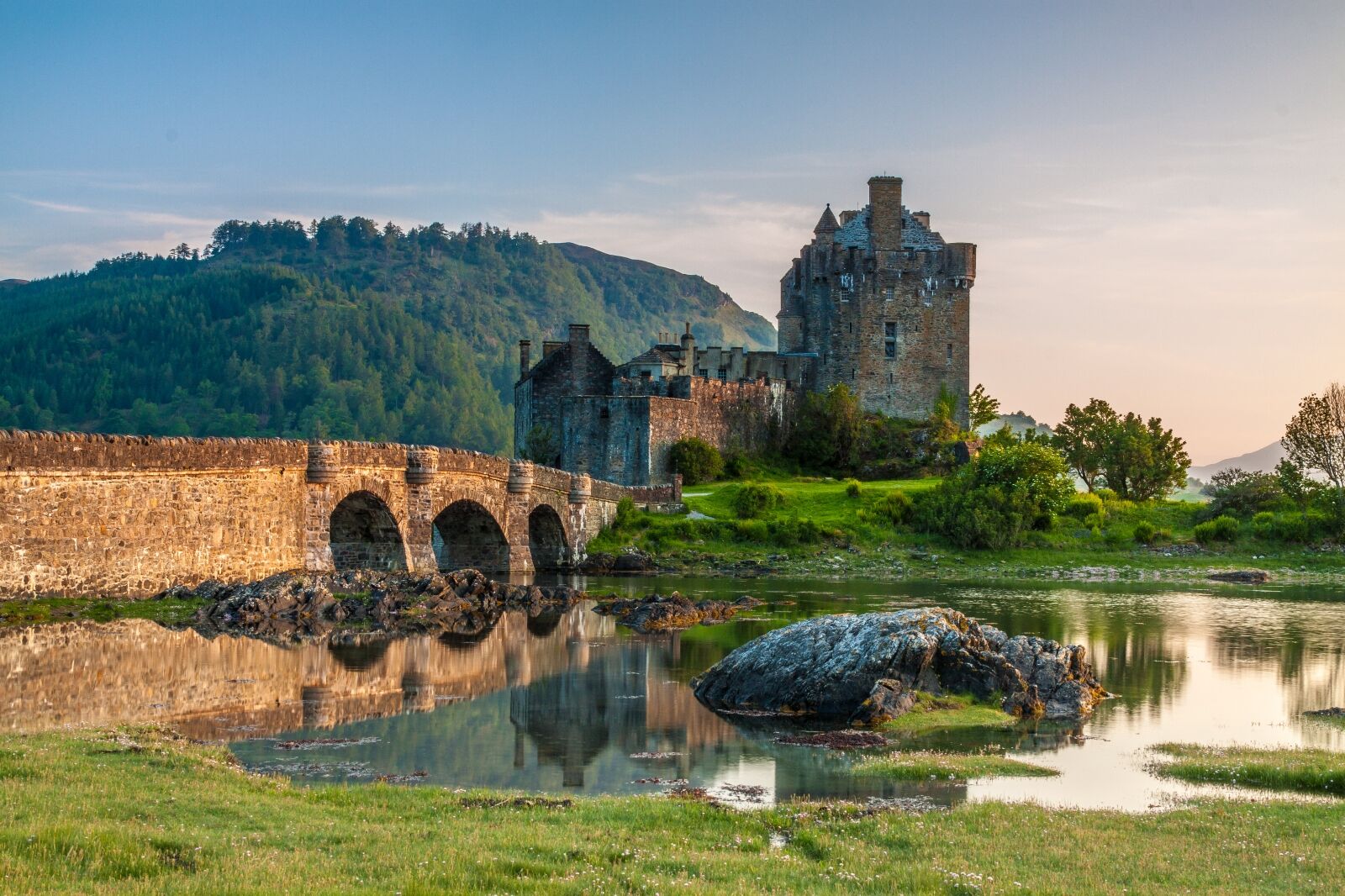
Photo: Phill Beale/Shutterstock
I completely forgot about the woman during our tour of Eilean Donan Castle, the conversation being quickly overshadowed by the location’s otherworldly beauty. On a little island in Loch Duich, Loch Long, and Loch Alsh, and connected to the mainland only by footbridge, the 13th-century castle is one of the most striking landmarks in the Highlands. The former stronghold of Clan Mackenzie, the castle was destroyed during the Jacobite rebellions of the 1700s before being reconstructed and turned into a museum.
Back in Inverness, I quickly learned that this “Capital of the Highlands” wasn’t merely a city to rest up during your Scottish Highlands tour. We settled in for dinner at The Mustard Seed, a local favorite right on the banks of the River Ness. While Scotland is undeniably known for its seafood, I had a delicious braised duck, and one of my colleagues called the seared ribeye the “best steak they ever had.”

Photo: Sergii Figurnyi/Shutterstock
The evening ended with a nightcap at The Malt Room, a small, stylish whisky bar tucked away in an alley. Serendipitously, we ran into one of the bar’s owners while ordering our drinks — a friendly guy in his early-30s, whose passion for Highlands whisky was immediately obvious. I had been longing for Jameson, my drink of choice back home, but realized drinking an Irish whiskey in a Highlands whisky bar would be like wearing a Red Sox hat in Yankee Stadium, and went with a Craigellachie 12 instead.
“Have you been in Inverness long?” he asked, once we all had our drinks.
“A few days,” another journalist answered. “We’ve been going all around the Highlands, seeing distilleries, castles, little towns.”
“Oh, wonderful. And how’re you getting around? Car?”
“Train,” I said, with more pride than I would have thought possible five days ago.
“Well that’s a special trip, isn’t it? You see all kinds of things, meet all kinds of people — you know, colorful people — on a train that you never would otherwise.”
Only then did I remember the American woman. Even if she was a little unhinged, I admired her sense of independence, and her ability to just go and figure out the details later. To her, to those two backpackers, and now to me, the train meant freedom.
In defense of trains
Cars are like novels. Trains are poems. They’re tough to appreciate at first, but once you understand the weight of the words, once you get it, the beauty is obvious.
Before Scotland, you could look up “rental cars” in an encyclopedia and see my smiling face leaning against one. Didn’t matter where I was going, or for how long — I’d always drive myself. Unbridled freedom, however, means reading road signs in other languages, hoping your GPS has a signal, worrying about parking on narrow European streets, and (in Scotland) driving on the opposite side of the road. On the train, I found myself actually able to switch off my brain. Relieved of the pressure of “figuring it out” every step of the way, I could actually relax and recharge.
It’s embarrassing to admit, but it never occurred to me that train views would be any different from car views. Scotland’s railroads cut through parts of the country untouched by paved roads. We’d go hours with no glimpse of a car or highway. Indeed, as we plunged deeper into the green wilds of the countryside, it felt more like plunging into the past, into a time when castles were actually inhabited by clan leaders, and whispers of a Loch Ness Monster were just circulating. Whatever the view might be, on a train, you’re actually free to enjoy it; to press your face against the window and look at a stone bridge without crashing the car; to watch the green hills, scroll by and imagine you’re on the Hogwarts Express; or, if you so wish, to sleep.
And perhaps the biggest benefit? The ability to get away from your friends. When you spend days traveling with people in close quarters — no matter how much you like them — you get sick of them. I genuinely enjoyed the company of the other journalists on my trip, but by day three, I couldn’t wait to put a few rows between us on the train (and I’m sure they felt the same about me). Many of us still keep in touch. Had we all been crammed into a rental car, that might not be the case.
Taking a Scottish Highlands tour doesn’t mean completely going it alone, either. For all the convenience of a guided tour without the annoying, microphone-toting tour guide herding tourists onto a bus, Vacations By Rail offers train trips with a variety of pre-made and customized itineraries. They’ll set you up with rail tickets, accommodations, meals, excursions, a professional tour escort (if you wish), and send you on your way. Their West Highlands itinerary, for example, stops at Duart Castle, Neptune’s Staircase, Loch Ness, and Eilean Donan Castle, while their Orkney and Shetland Islands journey will bring you to the Neolithic sites on the Orkney Isles, Dunrobin Castle, and the Norse settlement of Jarlshof. They offer everything from luxury vacations on top-of-the-line trains like the Royal Scotsman and Orient Express, to self-guided packages aboard historic trains that give you the freedom to explore at your own leisure. You might not be backpacking from village to village, but you also won’t accidentally end up in a small rowboat paddling toward the Isle of Skye.